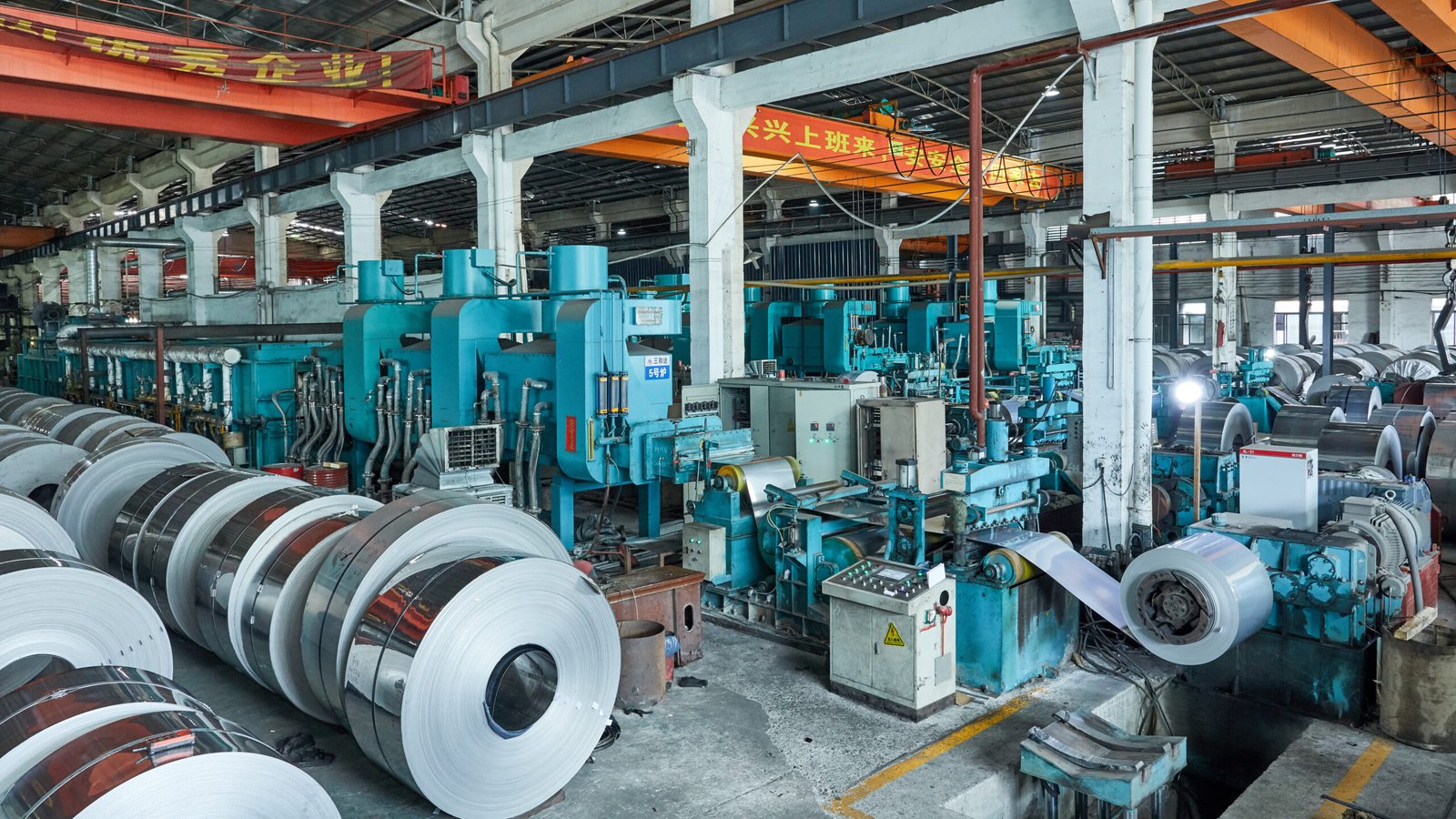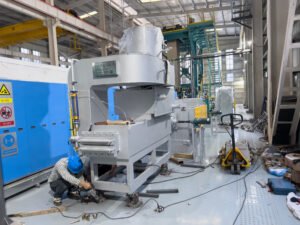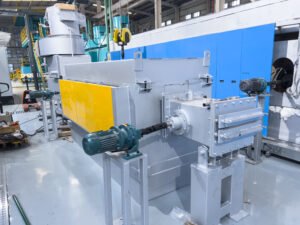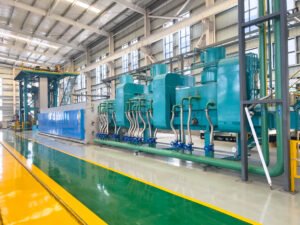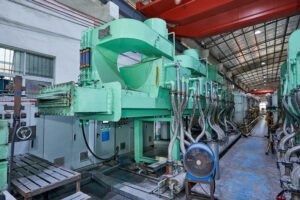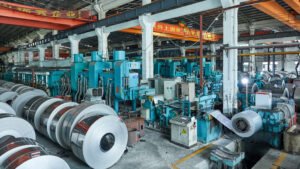Bright Annealing Stainless Steel Wire: Preventing Surface Cracks & Corrosion

Are you struggling with surface imperfections on your stainless steel wire after annealing? These unexpected cracks and patches of corrosion can lead to costly product rejections and damage your reputation. The solution lies in mastering the delicate interplay of temperature, atmosphere, and material science within the annealing process.
Preventing cracks and corrosion in bright annealed stainless steel wire involves meticulous control over atmospheric purity, precise temperature regulation, and optimized cooling rates. These factors work together to maintain the material's surface integrity, prevent oxidation, and ensure the wire achieves its desired mechanical properties for high-performance applications.
The challenge of producing consistently flawless wire can seem daunting. Many factors, from invisible contaminants in your gas supply to minuscule temperature fluctuations, can undo your hard work. But with over a decade of experience at AKS Furnace, I've learned that achieving perfection is not about luck; it's about implementing a robust, repeatable system1. Let's explore the specific causes of these defects and the proven solutions to eliminate them.
This isn't just a theoretical exercise; it's a critical business imperative. In industries like medical device manufacturing, automotive components, or aerospace, a microscopic surface crack is not a minor flaw—it's a potential point of catastrophic failure. The difference between a premium, reliable product and a batch of expensive scrap often comes down to the nanometer-thin passive layer on the steel's surface2. Understanding how to protect and perfect this layer requires a deep dive into the metallurgy of annealing, combined with practical, on-the-floor engineering. It’s this synthesis of science and real-world application that separates industry leaders from the rest. At AKS, we don't just build furnaces; we build the confidence that comes with total process control.
Problem: You’ve invested in producing high-quality stainless steel wire, only to discover microscopic cracks after the annealing stage. Agitate: These almost invisible defects can compromise the wire's structural integrity, leading to failure in the final application and costly recalls. Solution: Understanding the thermal and chemical root causes.
Common issues include micro-cracks from thermal stress due to improper heating and cooling rates, and surface tearing caused by the carbonization of residual drawing lubricants. These defects severely compromise the wire's tensile strength and fatigue life, rendering it unsuitable for demanding applications.
From my experience, a wire can emerge from the furnace with a brilliant, mirror-like finish, yet be riddled with underlying flaws. I recall a client who manufactured high-tensile springs for the automotive industry. Their products looked perfect but were failing fatigue tests at an alarming rate. The culprit was thermal shock within their outdated batch annealing furnace, which created a network of micro-cracks invisible to the naked eye. This experience taught us that surface appearance is only half the story. The true quality of an annealed wire lies in its metallurgical soundness, which is forged through precise process control. It’s not one single error but often a combination of factors—temperature gradients, surface contaminants, and material inconsistencies3—that conspire to create these defects. To defeat them, you must first understand them intimately.

The journey to eliminating these surface defects requires a forensic examination of the entire thermal process. It’s a deep dive into metallurgy, thermodynamics, and chemistry. For us at AKS, this isn't just about selling a machine; it's about providing a complete solution that ensures our clients' end products meet the world's most stringent standards. This means controlling every variable, from the moment the wire is uncoiled until it's safely spooled for shipping. This comprehensive approach is the only way to guarantee the performance and reliability your customers demand, turning a challenging manufacturing process into a competitive advantage.
Thermal Stress and Inadequate Temperature Control
The primary mechanical cause of surface cracking is thermal stress. During the annealing cycle, stainless steel wire undergoes significant expansion and contraction. If the heating or cooling rate is too rapid or non-uniform, immense internal stresses are generated as the surface temperature changes faster than the core. This differential creates a pulling force on the material's grain structure. When this force exceeds the steel's elastic limit at a given temperature, microscopic fissures form, particularly on the surface where the temperature change is most abrupt. These micro-cracks become the initiation points for larger fractures under mechanical load.
The physics behind this phenomenon is well-documented. For instance, austenitic stainless steel like Grade 304 has a thermal expansion coefficient of approximately . A sudden temperature change of several hundred degrees, especially in the cooling phase, can induce stresses well over 150 MPa. If the wire has any pre-existing surface imperfections or metallurgical inclusions, these locations act as stress concentrators, making them highly susceptible to fracturing. This is why our AKS Bright Annealing Furnaces are engineered with elongated heating and cooling chambers, allowing for gradual and precisely controlled temperature profiles that prevent thermal shock.
We worked with a client producing fine-gauge wire (under 0.5 mm diameter) for medical device braiding. They were experiencing a 15% rejection rate due to brittleness and surface cracking detected under magnification. Our process analysis revealed their furnace had significant temperature variations along its length, creating hot and cold spots that shocked the delicate wire. By implementing one of our continuous furnaces with multi-zone PID temperature control, we ensured a uniform temperature to within ±3°C. This level of precision eliminated the thermal stresses, dropping their rejection rate to below 1%.
The Hidden Danger of Residual Drawing Lubricants
A second, more insidious cause of cracking comes from chemical reactions on the wire's surface. During the wire drawing process, lubricants such as soaps, oils, and waxes are used to reduce friction. If these compounds are not thoroughly removed before annealing, they don't simply burn off. At the high temperatures of the annealing furnace (often >1000°C), they decompose and carbonize. This process can lead to two major problems: embrittlement and sensitization. The carbon can diffuse into the steel's surface, forming chromium carbides along the grain boundaries.
This phenomenon, known as sensitization, depletes chromium from the surrounding material, making the grain boundaries weak and prone to intergranular corrosion and cracking. The wire becomes brittle and loses its characteristic toughness and ductility. This is especially critical for applications requiring the wire to be bent, formed, or subjected to vibration. The carbonized residue itself can also create physical stress points on the surface, which then develop into cracks during thermal cycling. This underscores the absolute necessity of a robust pre-cleaning and degreasing stage before the wire ever enters the furnace.
A manufacturer of high-quality stainless steel mesh for industrial filtration systems approached us with a persistent brittleness issue. Their woven mesh was failing during pressure testing, with wires snapping unexpectedly. An analysis of their process showed that their alkaline wash system was not completely removing the heavy-duty drawing soap used for fine wire reduction. In our lab, we observed carbon deposits along the grain boundaries of the failed wires. The solution was twofold: we helped them optimize their ultrasonic pre-cleaning line and installed our bright annealing furnace, which uses a hydrogen atmosphere that helps to reduce any trace oxides, but cannot fix severe carbon contamination. The combination of proper cleaning and precise annealing eliminated the brittleness entirely.
Inconsistent Raw Material Quality and Inclusions
Lastly, the quality of the raw material itself can be a significant contributing factor. While a state-of-the-art furnace can optimize the annealing process, it cannot fix fundamental flaws within the steel. Inclusions—non-metallic compounds like oxides or sulfides that are trapped in the steel during its initial casting—act as built-in stress concentrators. During the heating and cooling of the annealing process, the differential expansion between the steel matrix and the inclusion creates localized high-stress zones. These zones are natural starting points for micro-cracks.
High sulfur content, for example, leads to the formation of manganese sulfides (MnS), which are elongated in the direction of drawing. These stringer-like inclusions are notorious for reducing the transverse ductility and fatigue strength of the wire. While material specification is the responsibility of the wire producer, the annealing process can either exacerbate or mitigate the problem. A furnace that provides very gentle, uniform heating can minimize the stress placed on these inclusions, reducing the likelihood of a crack initiating. Conversely, a furnace with poor temperature control will almost certainly turn these minor imperfections into critical flaws.
We encountered this exact scenario with a client who produces stainless steel wire for high-pressure hose reinforcement. They were seeing sporadic field failures that they couldn't trace to any specific production batch. After ruling out their annealing process (they were already using one of our furnaces), we recommended a deeper analysis of their raw material supply. Working with a metallurgist, they discovered that one of their steel suppliers was providing material with inconsistent and occasionally high inclusion ratings. By tightening their incoming material inspection protocols and rejecting sub-par batches, they eliminated the random failures. This was a powerful lesson in the synergy between raw material quality and advanced processing; one cannot be successful without the other.
Thermal stress causes micro-cracksПравда
Rapid temperature changes during annealing create internal stresses that exceed the steel's elastic limit, forming microscopic surface cracks.
Residual lubricants simply burn offЛожь
At annealing temperatures, drawing lubricants carbonize and diffuse into the steel, causing embrittlement and sensitization rather than cleanly burning away.
What causes corrosion during the bright annealing process of stainless steel wire?
You run a batch of stainless steel wire through the furnace expecting a mirror finish, but it comes out dull, discolored, or even oxidized. This instantly turns your high-value product into scrap or forces costly rework. The cause is almost always a failure to maintain a perfectly pure protective atmosphere.
Corrosion during bright annealing is primarily caused by impurities such as oxygen, water vapor, or carbon dioxide within the furnace's protective atmosphere. These reactive gases attack the hot steel surface, causing oxidation and preventing the formation of the bright, passive chromium oxide layer.
The term "protective atmosphere" sounds simple, but in reality, it's a delicate chemical balancing act performed at over 1000°C. At these temperatures, stainless steel is highly reactive, and even a few parts per million (PPM) of oxygen can be enough to cause discoloration. The key metric we monitor is the "dew point"—a measure of moisture content. Achieving the ultra-low dew points required (often below -60°C) demands a furnace with impeccable integrity, from its seals4 to its gas delivery system. I’ve seen many operations struggle because of tiny, undiscoverable air leaks in their furnace muffle or supply lines, which continuously contaminate the expensive hydrogen or nitrogen gas they are pumping in. This battle against invisible enemies is where the quality of the furnace construction truly matters.
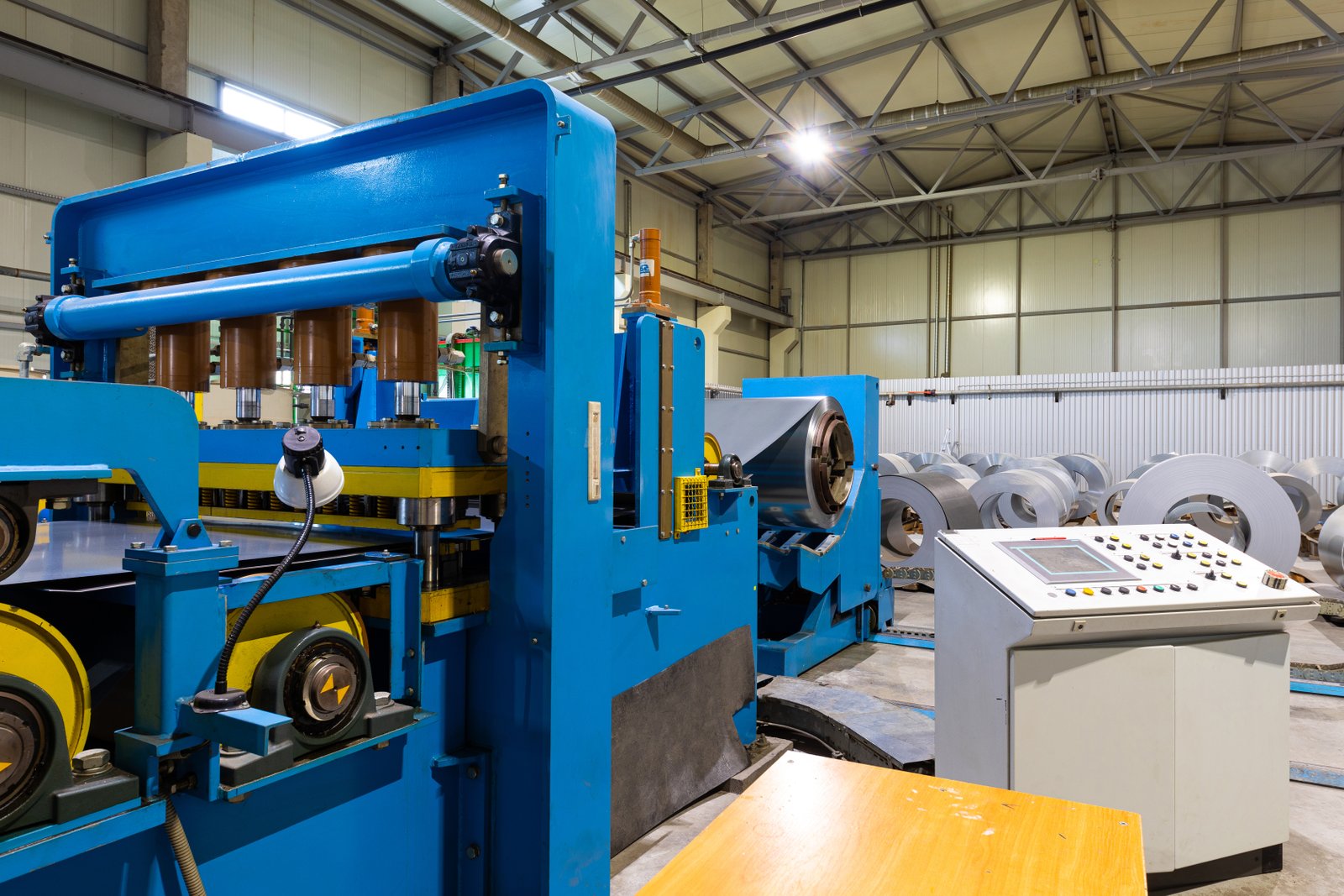
Solving the corrosion puzzle goes beyond just looking at the furnace; it's about viewing the entire gas system as a single, integrated loop. This includes the purity of the gas source, the integrity of the delivery plumbing, the gas-tightness of the furnace chamber, and the reliability of the sensors that monitor the atmosphere in real-time. A failure at any point in this chain can ruin the product. For instance, using industrial-grade hydrogen instead of a higher-purity grade might seem like a cost saving, but it can introduce enough moisture to cause oxidation. At AKS, we design our furnace systems holistically. We focus on robust, fully-welded muffles, high-quality seals, and integrated atmospheric control panels to give our clients precise and repeatable command over this critical environment, ensuring a flawless, bright finish, batch after batch.
The Critical Role of Atmosphere Purity and Dew Point
The bright, corrosion-resistant surface of stainless steel comes from a thin, transparent, and self-healing layer of chromium oxide ($Cr_2O_3$). The entire purpose of bright annealing is to relieve stress in the metal without damaging this layer; in fact, a proper anneal in a controlled atmosphere enhances it. However, this can only happen in an environment that is virtually free of oxygen. The primary sources of oxygen in a furnace atmosphere are air leaks and moisture (water vapor, $H_2O$). At high temperatures, water vapor readily disassociates, freeing up oxygen to react with the steel. This is why the dew point, which is the temperature at which moisture will condense out of the gas, is the most critical parameter for preventing oxidation.
To prevent oxidation on 300-series stainless steel during annealing, the atmosphere's dew point must be maintained at an extremely low level, typically below -50°C to -60°C. This corresponds to a moisture content of just a few parts per million. Any deviation above this threshold will result in a reaction between the moisture and the chromium in the steel, forming a dull, gray oxide layer instead of the desired bright, passive surface. The protective atmosphere, usually a mix of dry hydrogen ($H_2$) and nitrogen ($N_2$), is actively reducing. The hydrogen reacts with any trace oxygen to form $H_2O$, which is then purged from the system. However, if the volume of contaminants entering the furnace exceeds the reducing capacity of the hydrogen, oxidation will occur.
This is where the design of the furnace becomes paramount. Our AKS Bright Annealing Furnaces are constructed with fully-welded, pressure-tested muffles made from high-temperature alloys like 310S or Inconel 601. We use specialized sealing systems at the entry and exit points to minimize atmospheric contamination. Furthermore, our integrated gas control systems continuously monitor the dew point with precision sensors, automatically adjusting gas flow rates to maintain the optimal environment. A client producing decorative architectural wire, where aesthetic consistency is non-negotiable, switched to our furnace specifically because their previous equipment could not hold a stable low dew point, resulting in inconsistent color and finish. Our system gave them the repeatable quality they needed.
Oxidation from Furnace Leaks and Contaminated Gas Sources
The most common culprit for a sudden or persistent corrosion problem is an integrity breach in the furnace system. This can be an "external" leak, where ambient air is drawn into the furnace, or an "internal" one, where the protective gas itself is contaminated at the source. External leaks can be notoriously difficult to find. They are often hairline cracks in the furnace muffle or a worn-out seal that only opens up and leaks when the furnace reaches its operating temperature and the metal components expand. These leaks introduce a continuous stream of oxygen and moisture that can easily overwhelm the protective atmosphere.
Internally, the problem can stem from the gas supply. A bad cylinder of hydrogen, a contaminated nitrogen storage tank, or oil residue in the gas delivery lines can all introduce oxidants into the furnace. This is why a comprehensive quality control program must include verification of incoming gas purity. Many modern annealing lines incorporate in-line oxygen and moisture analyzers right at the furnace inlet to act as a final check on the gas quality before it enters the critical heating zone. This provides a crucial layer of protection against a contaminated supply.
We once had a frantic call from a customer who was experiencing a sudden, widespread oxidation issue on their stainless steel strips. Their furnace was relatively new and had been performing flawlessly. Our service engineers conducted a thorough inspection and pressure test of the furnace muffle, which showed no leaks. Puzzled, we started tracing the gas supply line back from the furnace. The problem was ultimately discovered in a flexible hose connecting the main nitrogen line to the furnace control panel; a small, almost invisible crack in the hose was aspirating tiny amounts of air into the gas stream. Replacing a single, inexpensive component restored their multi-million dollar production line to perfect operation. This highlights how every single part of the system is critical.
Chemical Reactions with Surface Contaminants
Beyond atmospheric oxygen and moisture, corrosion can also be triggered by chemical contaminants present on the surface of the wire itself. As discussed previously, residual drawing lubricants can cause carbonization, but other chemical residues, particularly chlorides and sulfates, are even more aggressive corrosive agents at high temperatures. These are often introduced during pre-cleaning stages if improper cleaning agents are used or if rinsing is inadequate. For example, using chlorinated solvents for degreasing can leave behind trace chloride ions on the wire surface.
At annealing temperatures, these chloride ions vigorously attack the passive layer of the stainless steel, leading to a form of localized corrosion known as pitting. This is far more dangerous than uniform oxidation, as it creates tiny holes that can penetrate deep into the material, acting as severe stress risers and compromising the wire's integrity. Similarly, sulfur residues from low-quality lubricants or cleaning agents can cause severe intergranular corrosion. This is why the choice of cleaning chemicals is a critical process parameter that must be carefully controlled.
A client in the food processing industry, manufacturing wire racks for commercial ovens, faced a serious issue where their products were failing salt spray tests, a standard measure of corrosion resistance. The racks appeared bright and clean after annealing, but they showed signs of rust after just a few hours in the salt spray chamber. Our investigation traced the problem to their cleaning process. They were using a rinsing agent that contained a high level of sulfates. While invisible after drying, these sulfate residues remained on the wire surface. During annealing, they reacted with the steel, damaging the passive layer. By switching to a multi-stage cleaning process with a final rinse in deionized water, they completely eliminated the problem and their products easily passed the corrosion tests.
Oxygen causes corrosion during bright annealingПравда
Even trace amounts of oxygen in the furnace atmosphere can react with stainless steel at high temperatures, leading to oxidation and discoloration.
Industrial-grade hydrogen is safe for bright annealingЛожь
Industrial-grade hydrogen often contains moisture impurities that can cause oxidation; high-purity hydrogen is required for bright annealing.
How do surface cracks and corrosion impact stainless steel wire performance?
You might think a microscopic crack or a slight bit of discoloration is just a minor cosmetic issue. Agitate: But in the world of high-performance materials, these "minor" flaws are the seeds of catastrophic failure, leading to product recalls, liability claims, and irreparable damage to your company's reputation. Solution: Understanding the profound impact these defects have on mechanical and chemical performance.
Surface cracks act as powerful stress concentrators, dramatically reducing the wire's fatigue life and ultimate tensile strength. Corrosion and oxidation compromise the protective passive layer, making the wire highly susceptible to further environmental degradation, which is unacceptable for medical, food-grade, or marine applications.
Think of a surface crack like a small chip in a car's windshield. A tiny, insignificant point of damage can, under the right stress or temperature change, propagate across the entire pane. The same principle applies to high-strength wire. In an application like a valve spring in an engine or a guide wire in a surgical catheter, the material is subjected to millions of stress cycles. A surface micro-crack creates a focal point for this stress, leading to fatigue failure far below the material's designed strength. Similarly, a compromised passive layer means a surgical instrument could corrode during steam sterilization, or a component in a chemical plant could fail unexpectedly. There is no tolerance for such risks in these critical industries.
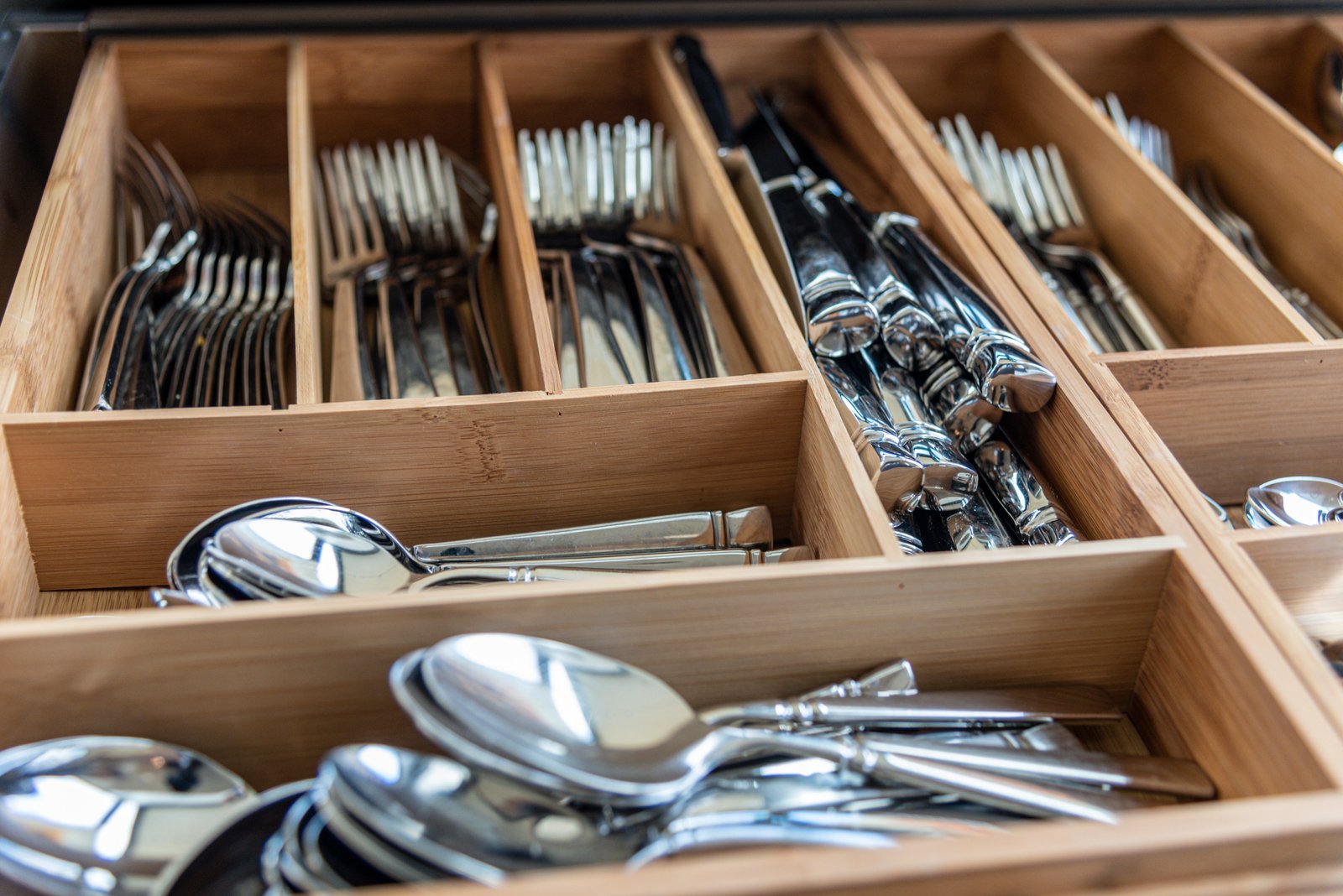
The consequences ripple far beyond just the failed part. For our clients who manufacture components for major international brands, a single faulty batch can lead to the loss of a multi-million dollar contract. The impact is not just financial; it's about trust. Your customers rely on you to provide material that is 100% sound. When you deliver wire, you are delivering a promise of performance and safety. Defects like cracks and corrosion break that promise. This is why at AKS, we see our role as more than just furnace builders; we are partners in quality assurance. We help our clients implement the systems and controls needed to ensure that every meter of wire they produce is free from these hidden dangers, protecting their business and the end-users who depend on their products.
Drastic Reduction in Mechanical Properties and Fatigue Life
The most significant impact of surface cracks is on the mechanical performance of the wire, specifically its fatigue life. According to the principles of fracture mechanics, any crack or sharp notch on the surface of a material acts as a stress concentrator. When the wire is placed under tension or cyclic loading (bending back and forth), the stress at the tip of that tiny crack can be many times higher than the overall stress in the rest of the wire. This localized high stress causes the crack to grow a little bit with each loading cycle, a process known as fatigue crack propagation.
The result is that the wire can fail at a load far below its theoretical tensile strength. For a material that is designed for dynamic applications—such as springs, wire ropes, or reinforcing braids—this is a catastrophic failure mode. A surface crack just 0.1 mm deep can reduce the fatigue life of a high-strength wire by over 50%. The wire will fail prematurely and unexpectedly, often with no visible warning signs. This is why industries like automotive and aerospace have zero-tolerance policies for surface cracks on critical components.
We worked with an automotive supplier who manufactured support hangers for exhaust systems. These parts are subjected to constant vibration and thermal cycling. They began experiencing an increase in warranty claims due to hangers snapping in the field. A metallurgical analysis of the failed parts pointed to fatigue failure originating at micro-cracks on the surface of the stainless steel wire. We traced the issue to their annealing process, where improper cooling was inducing thermal stress. By replacing their old furnace with an AKS continuous bright annealing furnace with a precisely controlled, multi-stage cooling zone, they eliminated the formation of micro-cracks. This restored the wire's fatigue life, and the field failures ceased.
Compromised Corrosion Resistance and Surface Passivity
The defining characteristic of stainless steel is its ability to resist corrosion. This ability is not inherent to the metal itself but is due to the formation of a very thin, invisible, and tenacious film of chromium-rich oxide on its surface. This "passive layer" acts as a barrier, protecting the underlying steel from chemical attack. When corrosion or oxidation occurs during the annealing process, it's because this protective layer was either damaged or, more likely, was prevented from forming correctly in the first place due to an impure furnace atmosphere.
A wire that emerges from the furnace with a dull, oxidized, or discolored surface has a faulty passive layer. While it might be possible to clean this wire with acids (a process called pickling), the resulting surface is often less corrosion-resistant than one that was properly bright annealed from the start. Furthermore, the wire will be highly susceptible to rusting or corroding when exposed to its intended service environment, be it the humidity in the air, cleaning chemicals, or saltwater. This is often detected using accelerated corrosion tests like the ASTM B117 salt spray test, a standard quality control check for many industries.
A client producing high-end stainless steel instruments for the dental industry faced a major setback when their products were rejected for showing signs of corrosion after autoclave sterilization. The steam and heat of the sterilization process were aggressive enough to attack the poorly formed passive layer on their instruments. The root cause was an inconsistent atmosphere in their old bell-type annealing furnace. For their most critical products, we recommended one of our Vacuum Annealing Furnaces. By processing the material in a high vacuum, we eliminated all atmospheric contaminants, resulting in an ultra-clean, highly passive surface that easily withstood repeated sterilization cycles, saving their contract and their reputation.
Negative Impact on Downstream Processing and Aesthetics
Beyond the critical issues of mechanical failure and corrosion, a poor surface finish can have significant negative consequences for subsequent manufacturing steps and the final product's appeal. If the wire is intended to be coated, plated, or welded, a clean and uniform surface is essential for proper adhesion and a sound joint. An oxidized or contaminated surface will lead to poor coating quality, weld porosity, and unreliable bonds, causing further rejections down the line.
For the vast number of stainless steel applications where aesthetics are a key selling point, the surface finish is everything. Think of high-end kitchen appliances, decorative architectural mesh, jewelry, or automotive trim. In these markets, a bright, lustrous, and consistent finish is not a bonus; it's a core requirement. A wire that is dull, discolored, or has a patchy appearance is simply unsellable. Inconsistent annealing can lead to variations in color and reflectivity along the length of a coil or from one batch to another, creating a logistical nightmare for quality control.
We have a customer in Southeast Asia who manufactures woven wire cloth for luxury interior design applications. Their business depends on delivering a product with a flawless, uniform luster. They were struggling with their existing annealing setup, which produced inconsistent results, forcing them to manually inspect and sort their finished product, a costly and inefficient process. They invested in one of our Mesh Belt Furnaces, designed for high-throughput continuous annealing. The furnace's exceptional temperature uniformity and atmospheric stability gave them the perfectly consistent, brilliant finish they needed across their entire production run. This allowed them to automate their inspection process and confidently market their product to high-end global brands.
Micro-cracks reduce fatigue lifeПравда
Even 0.1mm surface cracks can reduce fatigue life by 50% by acting as stress concentrators during cyclic loading.
Oxidation improves corrosion resistanceЛожь
Oxidation during annealing damages the protective chromium oxide layer, making the wire more susceptible to corrosion.
What solutions exist to prevent surface cracks and corrosion in stainless steel wire during annealing?
You're constantly battling surface defects, treating each batch as a new fight. This reactive, fire-fighting approach is inefficient, costly, and stressful. The only sustainable path to quality is to proactively implement a system of process controls and use equipment designed to prevent these issues from ever occurring.
Key solutions include investing in a high-integrity furnace with precise atmospheric and temperature control, enforcing a rigorous pre-cleaning and degreasing process, and meticulously optimizing the heating and cooling profiles to match the specific stainless steel grade and wire dimensions being processed.
The solution isn't a single magic bullet, but rather a holistic system where the equipment, the process, and the material science work in harmony. At AKS, I always tell our clients that buying a state-of-the-art furnace is the most important first step, but it's not the last. You must also build a fortress of quality control around it. This means validating your gas purity, standardizing your pre-cleaning protocol, and using the furnace's advanced controls to create a specific, repeatable "recipe" for each product you run. This transforms annealing from a variable art form into a predictable science, which is the foundation of modern, high-quality manufacturing.

Over the years, we've learned that the most successful manufacturers are those who view their heat treatment line not as a collection of separate machines, but as one integrated system. From the pay-off reel to the final spooler, every step has an impact on the final quality of the wire. A weakness in one link, such as an inadequate pre-cleaner, will compromise the entire chain, no matter how advanced the furnace is. This is why we increasingly work with clients to design and deliver complete, end-to-end bright annealing lines. By controlling the process from start to finish, we can eliminate the variables and guarantee a flawless result, empowering our clients to meet the toughest specifications with confidence and efficiency.
Advanced Furnace Technology: The First Line of Defense
The furnace is the heart of the annealing process, and its design and construction are the most critical factors in preventing defects. To prevent corrosion, the furnace chamber, or "muffle," must be absolutely gas-tight. This requires superior materials and expert fabrication. We utilize high-temperature, corrosion-resistant alloys like Inconel 6015 or 310S stainless steel6 for our muffles, which are continuously welded and pressure-tested to ensure zero leakage. This robust construction is the primary barrier that protects the pristine protective atmosphere from contamination by outside air.
Furthermore, furnace design plays a key role in preventing thermal stress cracks. Our AKS Печи для отжига Bright feature elongated, multi-zone heating and cooling chambers. This design allows the wire to be heated up and cooled down gradually and uniformly according to a precise, programmable profile. This prevents the thermal shock that leads to micro-cracking. We also incorporate advanced insulation using high-purity ceramic fibers, which not only improves thermal efficiency but also prevents the release of any potential contaminants into the furnace atmosphere, a common problem with older, brick-lined furnaces.
A compelling example of this is a large steel processor in India who adopted our continuous annealing furnace for their carbon and stainless steel strip products. Their initial motivation was the energy savings provided by our proprietary Рекуперация отработанного тепла system, which uses hot exhaust gases to preheat the incoming combustion air, cutting fuel consumption by up to 20%. However, within six months of operation, they reported that the most significant benefit was a 30% reduction in surface defects. This was a direct result of the superior atmospheric purity and exceptional temperature uniformity that our furnace design provided, proving that a well-designed furnace pays dividends in both efficiency and quality.
Precision Control of Atmosphere and Temperature
Having a well-built furnace is essential, but it's the intelligence of the control system that unlocks its full potential. Modern bright annealing demands precision. This is achieved through a combination of PLC (Programmable Logic Controller) based systems, PID (Proportional-Integral-Derivative) temperature controllers, real-time atmosphere sensors, and electronic gas flow controllers. This technology allows the furnace to automatically maintain the perfect conditions for any given alloy and wire size.
The control system continuously monitors and adjusts multiple variables. In-line sensors measure the dew point and residual oxygen content of the furnace atmosphere down to the parts-per-million level, and the system adjusts the flow of hydrogen and nitrogen to maintain the setpoint. Multiple thermocouples placed along the length of the furnace feed temperature data back to the PID controllers, which modulate power to the heating elements to maintain a uniform temperature profile to within a few degrees. This level of automation removes guesswork and human error, ensuring every coil of wire is processed under identical, optimal conditions.
| Stainless Steel Grade | Typical Annealing Temp. (°C) | Atmosphere Dew Point (°C) | Recommended Protective Gas |
|---|---|---|---|
| Austenitic (e.g., 304, 316) | 1040 - 1150 | < -60 | Dry Hydrogen (H2) or 75% H2 / 25% N2 |
| Ferritic (e.g., 430) | 780 - 850 | < -40 | Dry Hydrogen (H2) or Cracked Ammonia |
| Martensitic (e.g., 410, 420) | 650 - 760 | < -40 | Dry Hydrogen / Nitrogen Mix |
This table illustrates how process parameters must be tailored. Our furnace control systems allow operators to save these "recipes" and recall them instantly, ensuring perfect results every time. Our precision control of the gas-to-air ratio in our externally heated furnaces is another key feature. It ensures complete and efficient combustion, which not only saves fuel but also prevents any unburnt hydrocarbons from contaminating the process, leading to a cleaner furnace and a better product finish.
Optimizing the Entire Process Chain
The furnace, no matter how advanced, is just one component in a larger production system. To achieve zero-defect results, the entire process chain, from pre-treatment to post-handling, must be optimized. The most critical upstream process is cleaning. Any residual drawing lubricants, oils, or dirt on the wire surface will carbonize or vaporize in the furnace, leading to defects. A multi-stage cleaning system, often involving alkaline washing, rinsing, and ultrasonic agitation, followed by a hot air dryer, is non-negotiable for high-quality bright annealing.
Equally important is the post-annealing stage. The wire is still hot and vulnerable as it exits the heating chamber. Our Усовершенствованная система охлаждения is a crucial feature designed to protect the wire during this phase. It uses a long, sealed muffle where the wire is cooled under the protective atmosphere using controlled jets of recirculated, cooled gas. This process cools the wire rapidly but uniformly, preventing both re-oxidation and the thermal stress that can cause cracks. It ensures the wire is well below its oxidation temperature before it is exposed to ambient air.
We have found the most success with clients who adopt this holistic, integrated approach. A leading manufacturer of precision electronic components in Southeast Asia worked with us to design a complete production line. It started with automated pay-off reels, went through a high-performance ultrasonic cleaning system, into our AKS bright annealing furnace, and then through the controlled cooling zone to a precision take-up winder. By integrating every step into a single, seamless system, they gained end-to-end control over their process. This eliminated the intermittent quality problems they had faced for years and reduced their overall defect rate to virtually zero, allowing them to qualify as a top-tier supplier for global electronics brands.
Furnace design prevents thermal cracksПравда
Multi-zone heating/cooling chambers in modern furnaces prevent thermal shock by gradually adjusting temperatures.
Any furnace can prevent oxidationЛожь
Only gas-tight furnaces with specialized alloys (like Inconel) and pressure testing can reliably prevent oxidation.
What are the best practices for maintaining the integrity of stainless steel wire post-annealing?
You've done it. The wire coming off your line is perfectly annealed, bright, and defect-free. But the job isn't finished. All your meticulous work inside the furnace can be undone in minutes by improper handling and storage. Preserving that perfection is the final, crucial step.
Best practices include ensuring the wire is fully cooled below its oxidation temperature before it exits the protective atmosphere, using clean, non-contaminating handling equipment, and storing finished coils in dry, controlled environments to prevent moisture and surface contamination.
The "last mile" of quality control is often the most overlooked. I’ve visited plants with state-of-the-art furnaces where operators with greasy gloves were leaving fingerprints all over the pristine wire, or where finished coils were being stored outside under a tarp. These simple mistakes can introduce contaminants that lead to localized corrosion days or weeks later, long after the product has reached the customer. Maintaining the integrity of the wire after it leaves the furnace requires a disciplined and consistent approach to handling, packaging, and storage, ensuring the quality you created is the quality your customer receives.
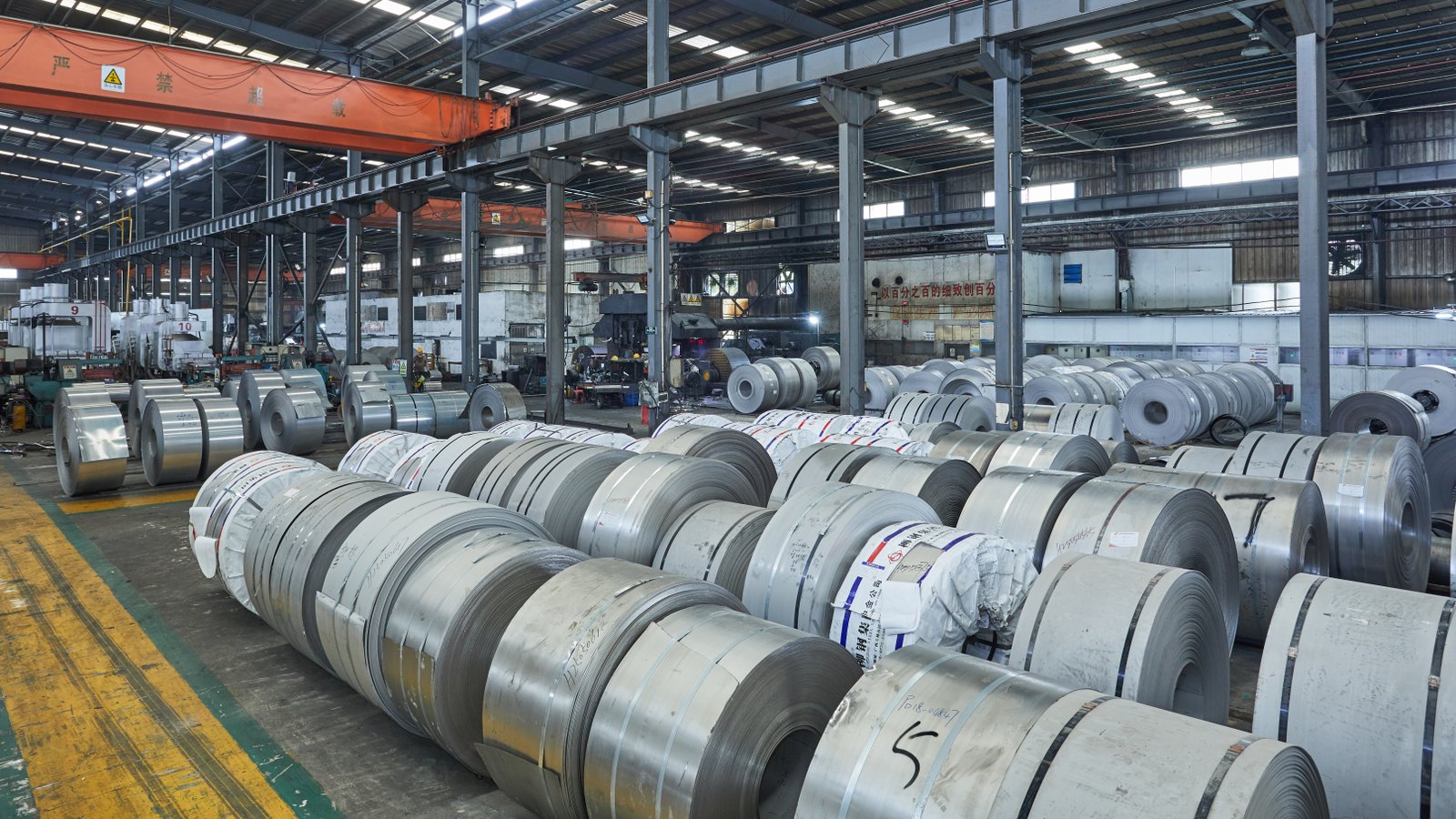
This final stage of the process is all about preserving the value you've worked so hard to create. It’s about ensuring that the perfect passive layer formed in the furnace remains intact until the wire is used in its final application. This requires a shift in mindset, where quality control extends beyond the production machinery and into the warehouse and shipping dock. As an exporter of furnaces to diverse global markets, we at AKS understand the challenges of transport and storage in different climates. We advise our clients to adopt robust post-annealing protocols7 not just as a best practice, but as an essential part of their brand protection strategy. A product that arrives in perfect condition reinforces a reputation for quality that is invaluable in the global marketplace.
Controlled Cooling and Safe Exit Environment
The first and most critical post-annealing step occurs within the furnace line itself. Stainless steel will oxidize in air at elevated temperatures (typically anything above ~200°C). Therefore, it is absolutely essential that the wire is cooled sufficiently до it leaves the protective atmosphere of the furnace's cooling muffle. If the wire exits while it is still too hot, it will immediately form a thin, straw-colored or blue oxide layer, ruining the bright finish. This is a common issue in furnaces that have undersized or inefficient cooling zones.
Our furnace designs at AKS incorporate extended cooling chambers for this very reason. These chambers are water-jacketed and filled with the same protective atmosphere as the heating section. High-velocity, recirculated inert gas is often used to accelerate cooling in a controlled manner. We ensure that the length and efficiency of the cooling zone are calculated to guarantee the wire's core temperature is safely below its oxidation point before it emerges into the open air of the factory.
We once helped troubleshoot a problem for a customer producing bright finish wire for high-end kitchenware. They were experiencing a faint but unacceptable yellowing on their wire. After checking their furnace atmosphere, which was perfect, we placed a temperature probe at the exit point of their existing furnace. We discovered the wire was emerging at nearly 250°C. Their production line was running too fast for their short cooling zone. By retrofitting one of our more efficient, extended cooling muffles onto their existing line, we solved the discoloration problem completely, allowing them to increase their line speed without sacrificing quality.
Proper Handling and Spooling Procedures
Once the wire has safely exited the furnace, it is highly susceptible to surface contamination. The passive layer, while robust, can be damaged by improper handling. The oils and salts from human hands, iron particles from rusty or dirty guide rollers, and residues from lubricants used on downstream equipment can all compromise the wire's surface and create sites for future corrosion. It is a strict rule in high-quality wire production that operators must wear clean, lint-free gloves when handling the finished product.
The equipment used for spooling and guiding the wire is also critical. Guide rollers should be made from non-contaminating materials like ceramics, nylon, or urethane, rather than plain steel which can shed microscopic iron particles that cause rust spots. Spooling tension must be carefully controlled. Too much tension can cause the wire to scrape against the spool flanges or underlying layers, creating scratches that damage the finish. Too little tension results in a loose coil that is easily damaged during transport.
We often provide guidance on these downstream processes as part of our technical service. One of our clients, a manufacturer of stainless steel wire for high-end musical instruments, found that their handling protocols were just as important as the anneal itself for the final product's performance. The slightest surface imperfection could affect the wire's acoustic properties. They implemented a "clean room" approach around their take-up winders, with dedicated, non-metallic tooling and strict glove policies. This meticulous attention to detail after the anneal was a key factor in their ability to produce world-class guitar and violin strings.
Ideal Storage and Packaging for Longevity
The final step in preserving wire integrity is protection during storage and transit. The primary enemies are humidity and atmospheric pollutants like chlorides or sulfur compounds, which are common in industrial areas. Storing bright annealed stainless steel coils in a damp warehouse or leaving them exposed to the elements is a recipe for disaster, as it will inevitably lead to surface rust and water staining. The ideal storage environment is a clean, dry, and climate-controlled indoor space.
For packaging, especially for export, multi-layer protection is the best practice. The coil should first be wrapped in a specialty paper or plastic film containing a VCI (Vapor Corrosion Inhibitor). VCI molecules vaporize and create a micro-environment around the metal surface that actively blocks the electrochemical reactions of corrosion. The VCI-wrapped coil should then be sealed in a heavy-duty plastic bag, often with desiccant packs included to absorb any trapped moisture. For maximum protection, this is then placed in a sturdy box or crate to prevent physical damage.
As a company that exports our furnaces to every corner of the globe, from the humid climates of Southeast Asia to the dry heat of the Middle East, we have extensive experience with the rigors of international shipping. We share this expertise with our clients, many of whom are also exporters. We advise them to adopt these robust packaging standards to ensure that the high-quality wire8 they produce in their factory arrives at their customer's facility, thousands of miles away, in the same pristine condition. This protects their product, their payment, and their hard-won reputation for quality in a competitive global market.
Wire must cool below 200°C before exitingПравда
Stainless steel wire will oxidize if exposed to air above ~200°C, ruining the bright finish.
Bare hands can safely handle annealed wireЛожь
Oils and salts from human hands can contaminate the wire's surface and cause corrosion.
Заключение
Achieving a flawless, bright finish on annealed stainless steel wire free from cracks and corrosion is not magic. It demands a synergistic approach, combining advanced furnace technology like ours at AKS, rigorous process control from pre-cleaning to post-handling, and a deep understanding of metallurgy.
-
Learn systems to ensure consistency and surface integrity in annealing processes ↩
-
Understand how the passive layer affects stainless steel performance and longevity ↩
-
Discover contributing factors that affect stainless steel surface quality in annealing ↩
-
Learn about seals that maintain furnace atmosphere integrity ↩
-
Learn about Inconel 601's properties and its role in furnace muffle design ↩
-
Understand why 310S stainless steel is preferred for high-temperature applications ↩
-
Understand how post-annealing procedures help maintain the quality of stainless steel products ↩
-
Discover effective packaging methods to ensure the integrity of stainless steel wires during shipping ↩
Have Questions or Need More Information?
Get in touch with us for personalized assistance and expert advice.
